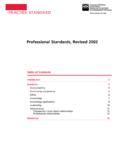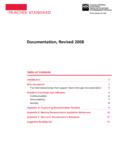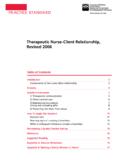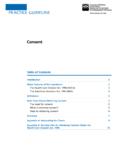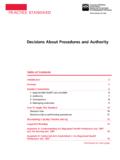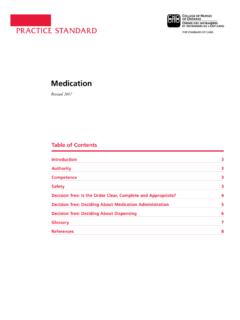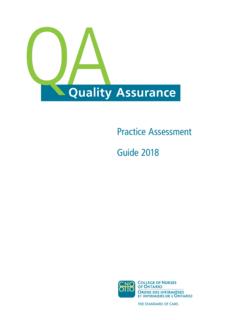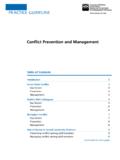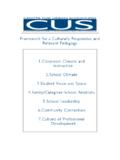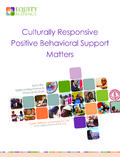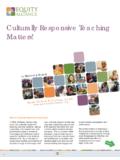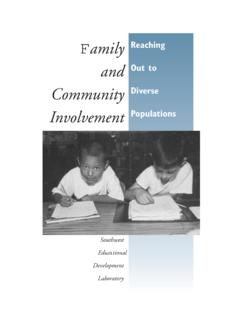Transcription of PRACTICE guIdElInE - CNO
1 PR ACTICE guIdElInETable of Contents Introduction 3 Assumptions 3 Elements of Providing culturally sensitive care 4 Self-reflection 4 Acquiring cultural knowledge 4 How to reflect on your cultural beliefs and values 5 Facilitating client choice 6 Communication 6 Working with interpreters 7 Non-verbal communication strategies 9 Developing an Approach to care 9 Assessment 9 Establishing mutual goals 10 Culture care preservation 10 Culture care accommodation 10 Culture care re-patterning 11 Quality PRACTICE Settings and culturally sensitive care 11 Conclusion 11 Selected Bibliography 13 culturally sensitive care culturally sensitive care Pub. No. 41040 ISBN 1-894557-52-2 Copyright College of Nurses of Ontario, or for-profit redistribution of this document in part or in whole is prohibited except with the written consent of CNO. This document may be reproduced in part or in whole for personal or educational use without permission, provided that: Due diligence is exercised in ensuring the accuracy of the materials reproduced; CNO is identified as the source; and The reproduction is not represented as an official version of the materials reproduced, nor as having been made in affiliation with, or with the endorsement of, Published June 1999 (ISBN 0-921127-69-3) Reprinted January 2000, October 2000, Revised for Web June 2003, Reprinted Jan 2004, May 2008, Updated June copies of this booklet may be obtained by contacting CNO s Customer Service Centre at 416 928-0900 or toll-free in Ontario at 1 800 of Nurses of Ontario 101 Davenport Rd.
2 Toronto ON M5R fascicule existe en fran ais sous le titre : La prestation des soins adapt s la culture, n 51040 Our mISSIOn is to protect the public s right to quality nursing services by providing leadership to the nursing profession in vISIOn is excellence in nursing PRACTICE everywhere in ACTICE guIdElInE3 College of Nurses of Ontario PRACTICE guIdElInE : culturally sensitive CareA Guide to nurses for Providing culturally sensitive care To care for someone, I must know who I am. To care for someone, I must know who the other is. To care for someone, I must be able to bridge the gap between myself and the Watson(Cited by J. Anderson, RN, PhD, 1987)IntroductionCulture refers to the learned values, beliefs, norms and way of life that influence an individual s thinking, decisions and actions in certain ways. (Adapted from Leininger, 1991)There are many challenges associated with working across cultures. The purpose of this guide is to support nurses1 in problem solving in commonly encountered situations.
3 Client-centred care requires that nurses recognize the client s culture, the nurse s culture and how both affect the nurse-client relationship. The importance of these cultural elements is emphasized in the College of Nurses of Ontario s (the College s) PRACTICE standard Therapeutic Nurse-Client Relationship, Revised 2006. There is no single right approach to all cultures or all individuals with a similar cultural background. The focus of care is always the client s needs. Each client and each situation is unique and requires individual assessment and nurses strive to provide culturally sensitive care , they must recognize how the clients and their perceptions are similar as well as different. Nurses enhance their ability to provide client-centred care by reflecting on how their values and beliefs impact the nurse-client relationship. All the attributes of the nurse, including age, gender, past experiences, strengths and weaknesses, have an impact on the interaction with the client.
4 Through reflection, learning and support, nurses will be better able to strengthen the quality of care they provide to the diverse communities they serve. Ways of assessing and dealing with situations that cross cultures are discussed at length in this scenarios in the guide are used only to illustrate the concepts and approaches associated with providing culturally sensitive care . The examples are not meant to generalize, stereotype or exclude any particular cultural group(s).The selected bibliography identifies additional sources for ongoing learning on various aspects of culture and care . In addition, information about the nurse-client relationship can be found in the College s Therapeutic Nurse-Client Relationship, Revised 2006 PRACTICE following assumptions are the core tenets of providing care that is culturally appropriate. Everyone has a culture. Culture is individual. Individual assessments are necessary to identify relevant cultural factors within the context of each situation for each client.
5 An individual s culture is influenced by many factors, such as race, gender, religion, ethnicity, socio-economic status, sexual orientation and life experience. The extent to which particular factors influence a person will vary. Culture is dynamic. It changes and evolves over time as individuals change over time. Reactions to cultural differences are automatic, often subconscious and influence the dynamics of the nurse-client relationship. A nurse s culture is influenced by personal beliefs as well as by nursing s professional values. The values of the nursing profession are upheld by all nurses. (See the College s Ethics PRACTICE standard.) The nurse is responsible for assessing and responding appropriately to the client s cultural expectations and In this document, nurse refers to Registered Practical Nurse (RPN), Registered Nurse (RN) and Nurse Practitioner (NP).PR ACTICE guIdElInE4 College of Nurses of Ontario PRACTICE guIdElInE : culturally sensitive CareElements of Providing culturally sensitive CareWhat you are speaks so loudly, I can t hear what you are Waldo EmersonSelf-reflectionEveryone has a culture.
6 To provide appropr iate client care , the nurse must understand her/his culture and that of the nursing profession. Many people say they do not have a culture, but this is false. Each person has particular beliefs, values, biases, etc. that he/she has learned, and these elements affect the way people view and respond to their world and other people in assists the nurse in identifying the values and biases that underscore her/his approach and interventions, and their impact on the client. Nurses need to examine honestly their reactions to different situations to discover why they responded in a particular way. In some circumstances, a nurse may seek help from others to assist in biases can be particularly difficult to identify when the nurse and client are of a similar cultural background. When we know a culture, we often think we know what is right for the client, and thus may impose our own values on the client by assuming our values are their values. Recognizing differences presents an opportunity not only to know the other, but also to help gain a greater sense of nursing profession also has a culture.
7 Values such as caring, empathy, truthfulness, promoting health and autonomy, and respecting client choices influence how the nurse interacts with clients. For example, in some families, decisions are heavily influenced, or even made for the client, by family members. Nurses may be opposed to this type of decision-making because client consent and autonomy is strongly valued by the nursing profession in may also influence client perceptions of a caregiver s behaviour. For example, a client may have an existing belief about nurses from a particular cultural background or gender. The nurse needs to be sensitive to the biases each client may bring to the can enhance their knowledge of various cultures and their skill in asking culturally relevant questions. Reflecting on their cultural beliefs and interacting with clients and colleagues from different cultures can broaden the understanding of other nurse, working as a community case manager, visited the home of a toddler with severe physical and developmental delays.
8 She explained to the parents that with their consent she would refer the child to a physiotherapy and occupational therapy program that would help the child be more independent. The parents refused, saying that it was their duty to care for their child because the child s condition is punishment for having conceived before they were married. They were not supportive of a program to increase independence. The nurse was upset and felt the parents were not acting in the child s best interests. DiscussionThe nurse did not understand the family s initial refusal of treatment. After reflection and discussion with colleagues, she realized that her personal and professional values of independence were causing her to feel upset with the parents refusal. She decided to explore with the family their goals for their child. In doing this, she learned that the parents wanted their child to become stronger and have fewer infections. When the same therapies were described as a means of meeting these goals, the parents were quite willing to participate.
9 The program was developed to meet the goals that the family identified as important. Acquiring cultural knowledge It is unrealistic to expect nurses to have in-depth knowledge of all cultures, but it is possible to obtain a broad understanding of how culture can affect beliefs and behav iours. Acquiring cultural knowledge begins with the recognition that PR ACTICE guIdElInE5 College of Nurses of Ontario PRACTICE guIdElInE : culturally sensitive Carebehaviours and responses that are viewed one way in one cultural context may be viewed in another way, or have a different meaning, in another cultural context. In health care , areas in which an individual s culture may affect beliefs and values include: perception of health, illness and death; meaning and role of suffering; view of hospitals, nurses, doctors and other healers; rituals and customs (religious and other); boundaries related to privacy, age, gender and relationships; effectiveness and value of different types of therapies; individual time-keeping beliefs and practices that may direct activities ( , medical testing appointments before sunset, or instructing clients to take medication before or after an event (such as breakfast) instead of at a specific time, such as 0800 hrs); family and social relationships ( , roles of family members in decision-making and caregiving, perception of what is best for the individual versus the family and what is best for the family as a whole).
10 Decision-making on consent to treatment ( , sharing information versus clients being shielded by family and having decisions made for them); independence/self- care versus interdepen dence/being cared for by others; and communication norms ( , eye contact versus avoiding direct eye contact, asking questions versus avoiding direct questioning).How to reflect on your cultural beliefs and valuesThese suggestions have been developed to assist nurses in understanding their individual cultures. The College provides a broader discussion of key nursing values in its Ethics PRACTICE standard. Carefully consider the question before writing your answer. As well, consider how someone from another culture might respond to the same question. Think about a time when you were with a group of people from another country, or even another part of Canada. What were the similarities and differences in culture? What would you describe as your culture? How would you rank the following in order of importance: ethnicity, family, work, the future, diet and religion?
